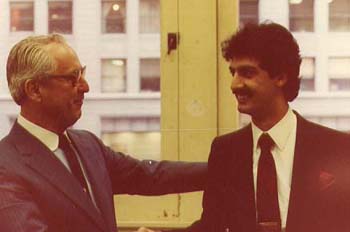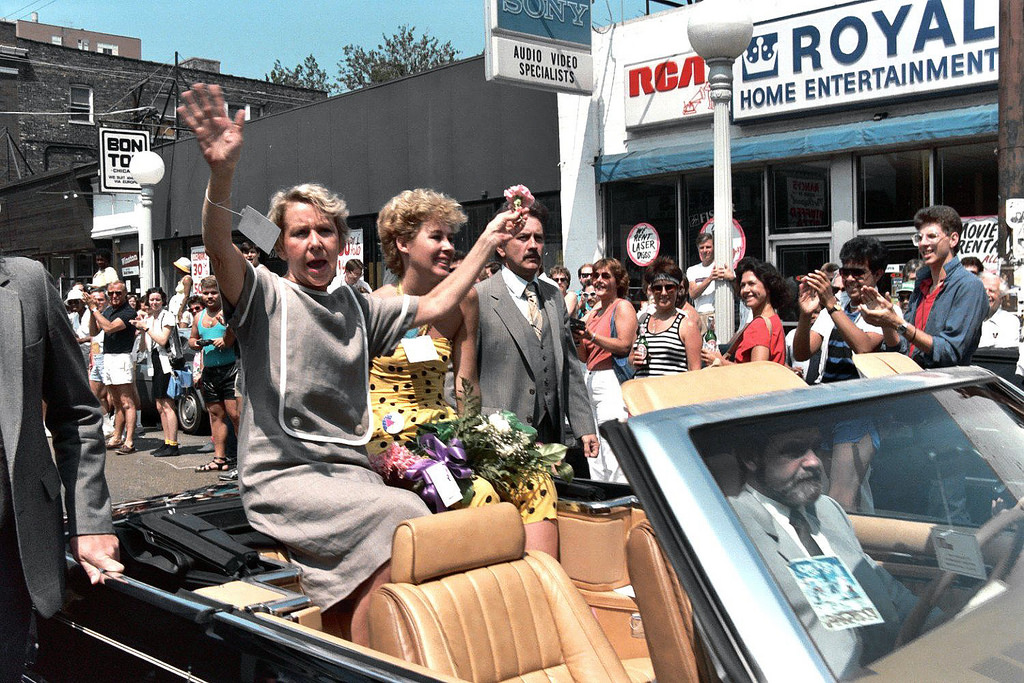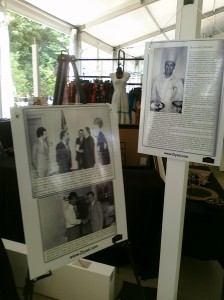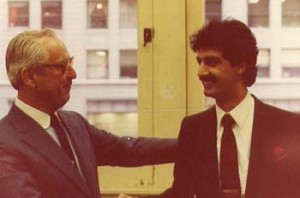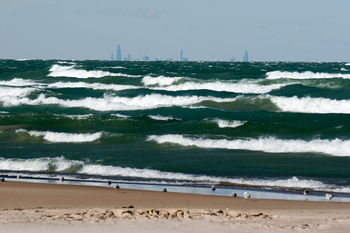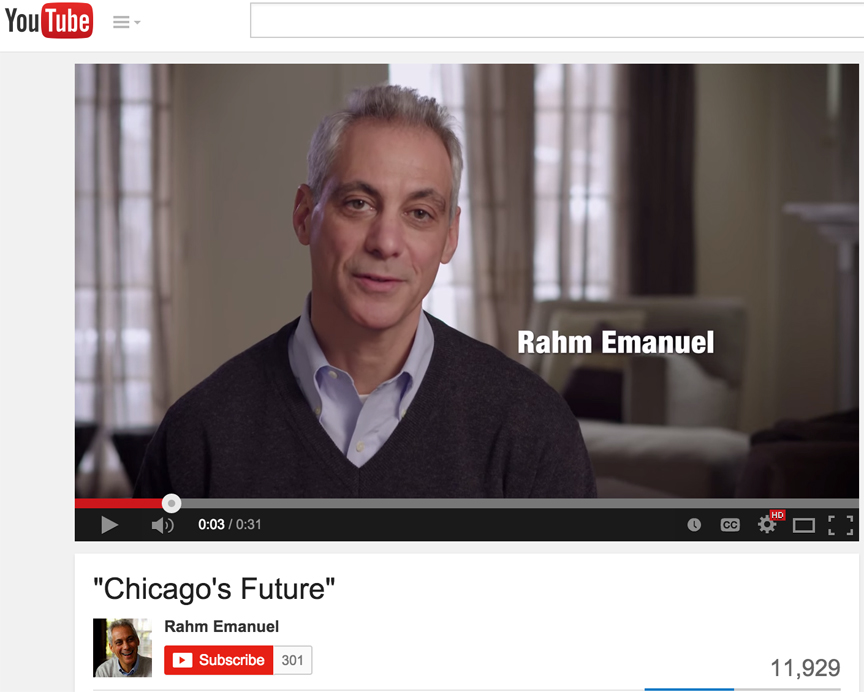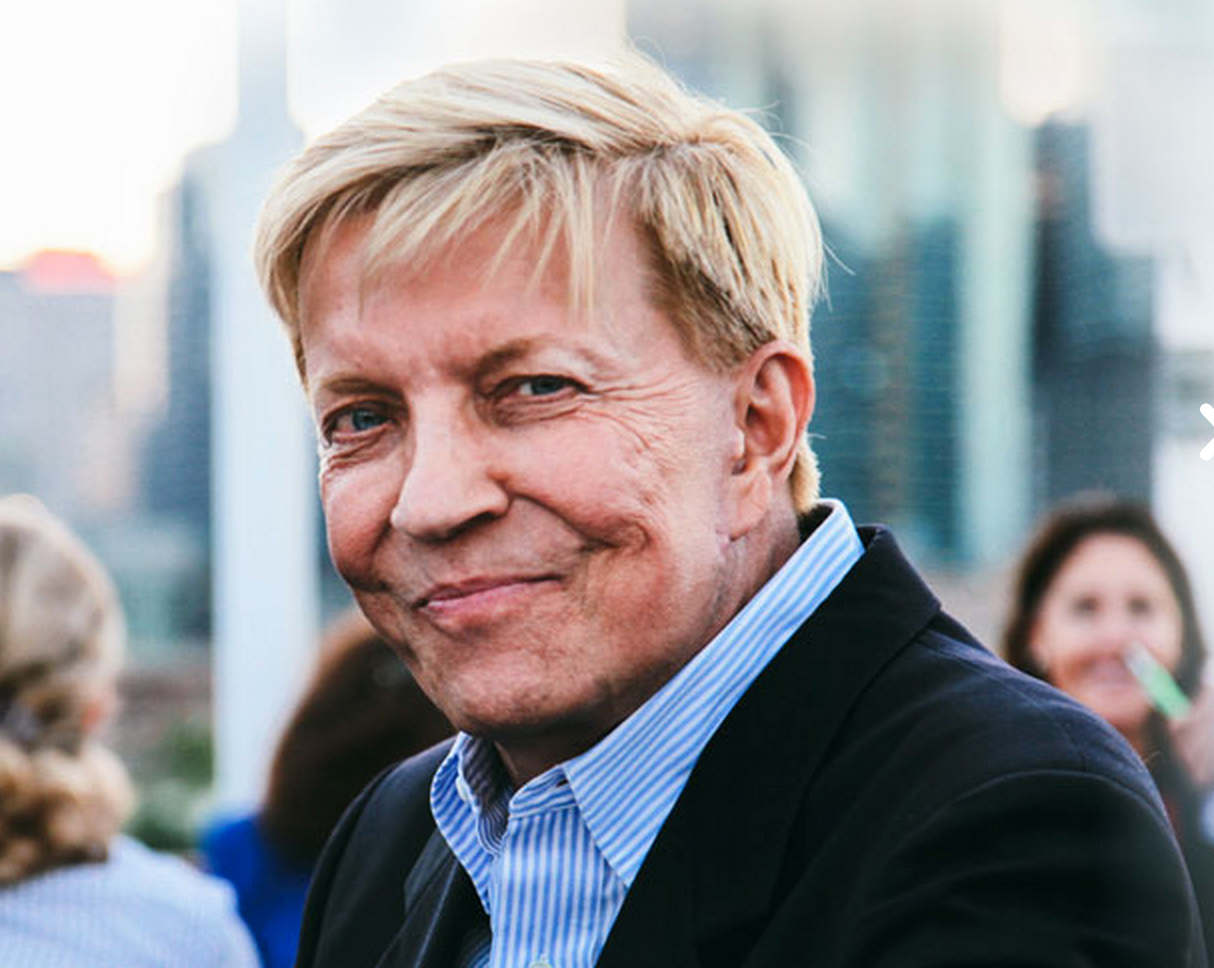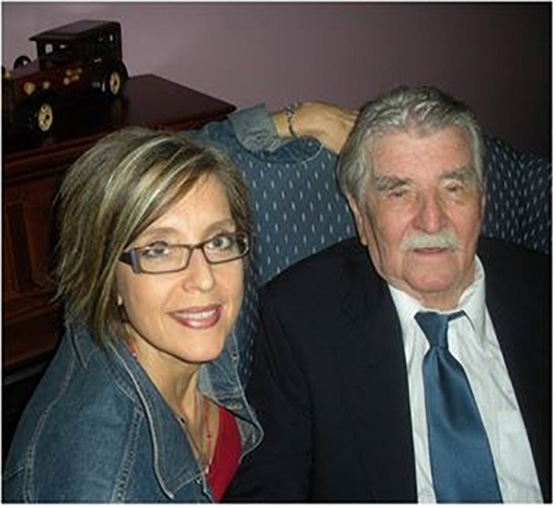Former Chicago Mayor Jane Byrne deserves more than she has received
By Ray Hanania
She had a “whim of steel,” quipped the late and legendary Chicago Tribune City Hall reporter and longtime colleague Robert Davis.
She “didn’t make news. She committed news,” opined the equally late and legendary Chicago Sun-Times City Hall reporter and my journalism mentor Harry Golden Jr.
Davis and Golden represented the best that the second chapter of Chicago’s Front Page journalism had to offer in the 1970s and 1980s, and they are talking about Jane M. Byrne, Chicago’s first woman mayor. Jane M. Byrne was Chicago’s 50th mayoral office holder and the 41st mayor of the city (when you combine the multiple, non-consecutive terms of several predecessors).
Her 81st birthday just passed on May 24, and while she is frail and ailing, Jane M. Byrne deserves to be remembered for her many achievements. Byrne was criticized as “vindictive” for her oftentimes shocking meanness that she demonstrated towards her critics. But in truth, she was far less vindictive than her political rival, Richard M. Daley, whose race in 1983 prevented Byrne’s re-election and helped open the door to Chicago’s first African American Mayor Harold Washington. When Washington died, he was briefly succeeded by the gentle Chicago Alderman and Machine favorite Eugene Sawyer, but the mayoralty was taken back with aggressiveness by Daley who held it for a record that exceeded that of his own father, Richard J. Daley, Byrne’s own political mentor. During his reign, Daley hated Jane Byrne and ensured that her name was eradicated from Chicago’s political and historical discussions with a vindictiveness that was unprecedented. Daley’s hatred of Byrne is unmatched in American politics.
During Daley’s new Machine, he went out of his way to ensure that Byrne was not invited to major Chicago events. At occasions when former Mayor’s should have been acknowledge, Daley pretended she didn’t exist. Chicago Mayor Rahm Emanuel, however, invited Byrne to his inauguration, a rare appearance considering her failing health and the history of anti-Byrne sentiment by his predecessor.
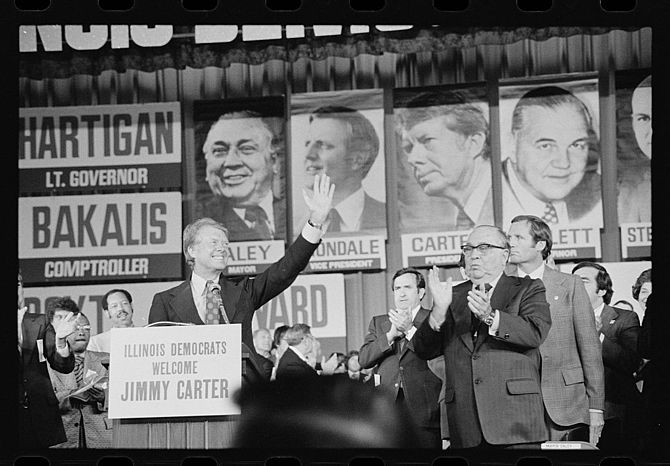
English: Jimmy Carter and Chicago Mayor Richard J. Daley at the Illinois State Democratic Convention in Chicago, Illinois (Photo credit: Wikipedia)
Although Byrne and I had an on-again, off-again love-hate political-journalism relationship, during the past several decades I have repeatedly written that Byrne was being unfairly treated. There were so few voices that made that argument. Byrne deserves to have a great Chicago monument dedicated in her honor because despite her whirl-wind controversy-filled four years in office, she did much good. One of her greatest achievements was the revitalization of the abandoned Navy Pier. It was her idea to bring it back to life and today is it a tourist magnet, plagued only by the flies of political cronyism and contract favoritism handed out during the Daley years.
I would write that, but few voices would listen.
Byrne and I began as friends. In a way, her rise in politics fueled my own rise in journalism. In 1977, Bruce Sagan, the brilliant community newspaper publisher had asked in the newsroom of the weekly Southtown Economist if anyone in the office wanted to go to City Hall to cover the then very boring political beat. Michael A. Bilandic, a bean-counting brilliant political accountant was in charge following the death of Richard J. Daley in December 1976. No one in the newsroom wanted to go. But I was new to journalism and the Southtown, then published on Wednesday and Sunday. And I volunteered. I would drive out to City Hall, 121 N. LaSalle Street, every morning and then drive back to the Southtown offices at 5959 S. Harlem Avenue on the Southwest Side. In early 1978, the big story was Bilandic running in the 10 K Marathon in Beverly Hills. Bilandic was an athlete who paid a lot of attention to his health. People loved it, but in terms of real politics, the story was a yawn. I ran with Bilandic (and got his autograph on my souvenir marathon t-shirt). Bilandic was a nice guy and so non-newsworthy.
In the summer of 1978, after the Daily News folded, Sagan announced that the Southtown would publish daily, which meant I had to write more City Hall and political stories. And I was worried, until Jane Byrne announced that she was going to run for Mayor against Bilandic. Byrne had worked as Commissioner of Consumer Sales, Weights & Measures under Richard J. Daley, but was later fired after his death by Bilandic.
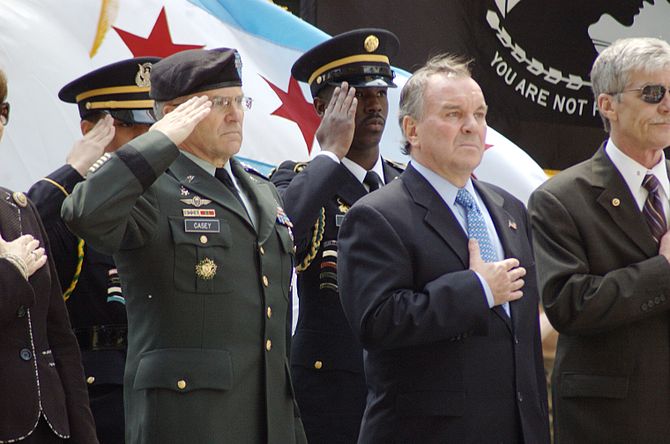
English: Chief of Staff of the United States Army Gen. George W. Casey, Jr. and Chicago Mayor Richard M. Daley recite the Pledge of Allegiance Saturday, May 24, 2008 during a wreath laying ceremony at Daley Plaza as part of the city of Chicago’s Memorial Day observance. (Photo credit: Wikipedia)
Everyone laughed. I remember Sagan asking me to trail Byrne when her campaign took her to many Southwest Side appearances. I first met her in November that year. She was very nice. Very polite. And very smart. She promised to reform Chicago and she targeted the “Cabal of Evil men” who surrounded Bilandic: The Cabal Jane Byrne targeted were: Ed Vrdolyak, the alderman of the 10th Ward and a former young rebel who tried unsuccessful to battle Richard J. Daley years before; Fred Roti, the quiet alderman of the 1st Ward and representative of the political arm of the Chicago Outfit; and, Edward M. Burke, Vrdolyak’s political sidekick, alderman of the 14th Ward, a former cop and son of a powerhouse Democratic Committeeman.
No one believed Byrne would win office, but I followed her around through the Winter of 1978. It was a super snow storm that shook up the Bilandic administration. The snowfall was record-setting. But Bilandic couldn’t handle it the way he could handle the city’s finances. He promised to plow streets, but they were never plowed. Then they removed cars to parking lots, that were then buried in another snowfall.
The CTA trains were having huge problems pushing through the snow mounds and some “genius” at City Hall suggested that Bilandic have the elevated trains skip past the inner-city stops in order to get to the White neighborhoods where the Machine’s vote was strongest. Blacks would stand in arctic cold temperatures and blistering snowstorms at the train platforms and watch as White commuters sat comfortably and warm as the trains zipped by.
Bilandic and his socialite wife, Heather Morgan, went to O’Hate Airport to accept a national award and the presentation occurred at the airport on the worst day of the snow. While the mayor and his wife stood their boasting of the airport’s achievement, piles of luggage were stacked up in the background as commuters slept on the floors and shivered in the cold.
And then there was the discovery that Bilandic had given his friend, contractor and a former Deputy Mayor Kenneth Sain a $90,000 contract to develop a snow-plan the year before that was only 90-pages long, took a week to write and recommended stupid things like “When it snows, make sure the main streets are plowed first.” It read like a 5th grade book report.
Two weeks before the February 27th election, I stood at the Bismarck Hotel auditorium and listened (and recorded) Mayor Bilandic’s plea to the first of two groups of precinct captains at a lavish dinner intended to help motivate the captains to use their influence to talk to their voters and keep them in line to vote for the Machine. At that speech, Bilandic compared himself to Jesus Christ and the Shah of Iran, saying he was being persecuted and that evil was knocking at the city’s doors trying to destroy him and to destroy Chicago.
Jane Byrne won. The Chicago media had never had it so good. Her election was the best thing to happen to journalism. Byrne’s husband was a former reporter, Jay McMullen. And for the first six months, Byrne would “commit” news like committing a crime. At 9 am, she announced she was laying off 500 workers to save money. By 11:30 just before lunch, she raised the lay-off number to 2,000. By 1:30 when she came back from lunch, she denied ever saying she was going to lay-off anyone. By 2 pm at a public speech, she claimed that Chicago was near financial collapse. By 4 pm, she claimed she was being misquote.d By 6 pm, she said that the lay-offs would be 3,000. By 9 pm, she told reporters who hung out at her Chestnut Street condominium that she would postpone the lay-offs until she could get better data.
That was the “whim of steel” Davis joked about often.
Bill Griffin, the former City News Bureau reporter who broke the story about the Kenneth Sain snow report story, became Byrne’s chief of staff. One day, he emerged from Byrne’s 5th floor office and sighed that “Following Jane Byrne around is like following a B-52. She drops bombs all over the place.”
By August of 1979, my sources had told me that Byrne had decided to abandon reform. She was embarrassed by the fumbling politics of her new City Council reformers, Alderman Bill Lipinski, Martin Oberman and John Aiello, who were working with Richard M. Daley, then a state senator. Vrdolyak single handedly made them look like amateurs during a debate over an O’Hare Airport terrorist hijacking incident in which Byrne wanted to punish Vrdolyak’s Chicago Police brother, Victor, who had been in charge.
Quietly, John D’Arco, the First Ward Committeeman and Roti’s boss, had been summoned to Byrne’s office, along with Vrdolyak, Burke and Roti. And in that meeting, Byrne reappointed them as her floor leaders. She put the “Cabal of Evil Men” back in power, my sources had told me. I watched as D’Arco slowly walked out of Byrne’s office that day, his cigar stogy clinging to his lower lip and smoke clouding around him. And I wrote my exclusive story that Burke and Vrdolyak were “Back in the Saddle.”
Byrne was angry. And in the next two years, Byrne got even angrier with me, calling me all kinds of names including, at one press conference, “Scum” claiming that I was “pimping” for Richie Daley who was conniving to takeover Byrne’s administration. She feared an inside coup.
Vrdolyak had told Byrne something during their meeting, Roti later acknowledged, that Daley wanted Byrne’s job. Vrdolyak said he only wanted power over the City Council and didn’t want her job.
Jay McMullen threatened to punch me in the nose one day when I reported that Byrne wanted to punish Morgan Finely, the county clerk because Finley had reneged on a job he promised to McMullen under pressure from Bilandic, at the time she was just beginning her mayoral campaign. Byrne never forgot. In fact her motto was forgive but never forget. Byrne had a hard time forgiving. And she planned to run someone against Finley, a Democratic stalwart.
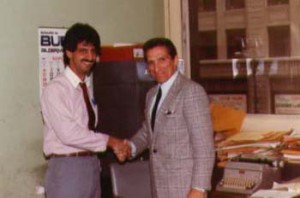
Ray Hanania and Harry Golden Jr., in the City Hall press room. Golden was Hanania’s journalism mentor and he helped get Hanania hired in 1985 at the Chicago Sun-Times.
When I wrote the story, McMullen was angry. Not because I wrote the story. But because the story made it sound as if he needed Jane Byrne, a woman, to fight his battles for him. It was demeaning to him, he barked as he yelled me over the telephone. I waved the other reporters to listen in on the party line in the City Hall Press Room as McMullen repeatedly threatened to come down to the 2nd Floor and punch me in the nose. And when Byrne found out the other reporters had listened in on the conversation — I needed witnesses for my story — at the next press conference she refused to talk to any of us, and suggested they confer with me to find out what “Little Richie” wanted done.
Byrne’s obsession with my columns and her fantasy that somehow I was “working with Richie Daley” drove her antagonism to great heights. Her animosity spread to several reporters including to David Axelrod, who later became a Daley strategist and a political consultant for Barack Obama.
In my case, once he became mayor, Daley quickly turned his vengeance on me proving we had never been close friends. I had been called “that Ay-rab” reporter to many times by aldermen and politicians on both sides to be liked. And despite the popularity of my weekly column, “the Political Grapevine,” I still wrote for a community newspaper, not one of the larger big city dailies.
It wasn’t until several years after she left office that Byrne and I reconciled at a Polish American dinner on the North Side. She acknowledged she had been harsh and I acknowledged I didn’t try hard enough to get her side of stories that I wrote that sent her off the deep end.
When I look back at Chicago politics, two mayors stand out for greatness. Harold Washington and Jane Byrne. Byrne was a great mayor. Had she won in 1983, she probably would have changed. The first election is sometimes looked at as happening as the result of pure luck. Winning re-election puts that paranoia aside and reinforces self-esteem and confidence.
She would have been great in a 2nd and even third term. Turns out Daley was the most vicious and vindictive, although at the end of his administration, he and I also seemed to reconcile our differences. (I had met Daley at the Arabesque Festival, that Rahm Emanuel had later undermined and killed, and show Daley a picture I had taken of his father in 1976, just before his death, meeting with the Ambassador of Morocco. I had taken the picture for an American Arab Newspaper I had published called The Middle Eastern Voice. It was my first story and my first City Hall assignment and my interview with Richard J. Daley and that photograph were important to me as journalism firsts.)
Sadly, many people today do not remember Jane Byrne. But they should. She broke barriers for women. She was treated unfairly. Male politicians who were mean were described as being “tough.” Women who were tough were called “vindictive.”
Jane Byrne was tough. She did great things. Navy Pier should be renamed in her honor. Maybe even renaming State Street, which she helped revitalize during her term in office.
(Ray Hanania is an award winning former City Hall reporter and political columnist. He is managing editor of the Illinois News Network Online www.IllinoisNewsNetwork.com.)
Related articles
RayHananiaINN
Hanania covered Chicago political beats including Chicago City Hall while at the Daily Southtown Newspapers (1976-1985) and later for the Chicago Sun-Times (1985-1992). He published The Villager Community Newspapers covering 12 Southwest suburban regions (1993-1997). Hanania also hosted live political news radio talkshows on WLS AM (1980 - 1991), and also on WBBM FM, WLUP FM, WSBC AM in Chicago, and WNZK AM in Detroit.
The recipient of four (4) Chicago Headline Club “Peter Lisagor Awards” for Column writing. In November 2006, Hanania was named “Best Ethnic American Columnist” by the New American Media;In 2009, he received the prestigious Sigma Delta Chi Award for Writing from the Society of Professional Journalists. Hananiaalso received two (2) Chicago Stick-o-Type awards from the Chicago Newspaper Guild, and in 1990 was nominated by the Chicago Sun-Times for a Pulitzer Prize for his four-part series on the Palestinian Intifada.
Latest posts by RayHananiaINN (see all)
- Candlewick Lake hosts Community-Wide Garage Sale May 21 - May 2, 2016
- Graduated state income tax for Illinois makes sense - April 28, 2016
- Suspect charged in double homicide in Lyons, Illinois - April 26, 2016

